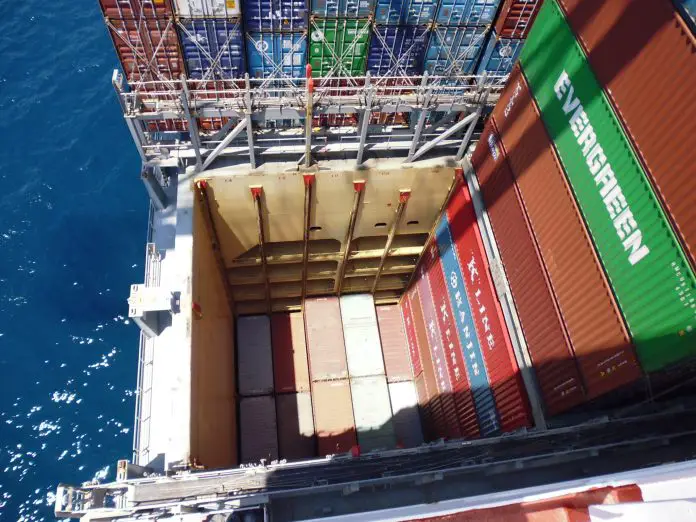I’m sure you’re all dying to know what a ship of this size carries from/to Asia.
So was I, hence my question posed to the Captain one evening at dinner.
Some background knowledge for you:
The weight of the ship, with no containers, is about 30,000 tonnes. It can hold, at a maximum, up to 3,750 containers. There are two sizes of containers: 20 and 40ft. If the ship’s full of containers (20 and/or 40ft), it can weigh up to 100,000 tonnes.
Ahh yes, let’s have a look here then.
The Captain pulls out a file to see what’s on board. From Europe to Asia the containers are carrying foodstuffs (wine, beer, frozen meat & fish), cowhide and electronic components. Sometimes they carry medicines too. There are also empty containers on board. From Asia to Europe is mostly the assembled electronic goods, the finished clothes/goods.Yes, the irony is is that it’s cheaper to send untreated leather and unassembled electronics to China/Asia, have the products made/assembled there and then shipped back to Europe for sale, rather than pay for and assemble in Europe (ahh the cogs of Globalization. Remember this the next time you joke about a product being made in China…think of the cost to you if it weren’t).
Depending on the carrier, one 40ft container from Asia to Europe (full) can cost approx. $1,500US. Admittedly, the cost of this transportation to and fro is ultimately paid by us, the consumer in the sense that it’s factored into the cost of the finished product…but even then, to operate in this way and it still work out cheaper than have a product made in Europe/U.S.? Well, for me I need a while to get my head around it!


Thanks for your travel info, it must have been quite a bit of fun.
One question tho, how much does it cost to travel by freighter?
Also, what keeps the containers from falling overboard?
Thanks, bon voyage.
Richard